Interviewing Under Armour’s Senior Director of Innovation, Nick Cienski, was truly an honor. I have never met someone with as much drive and courage to do what is necessary to start to better the world we live in. Nick was a joy to speak with and we discussed the 6 Summits Challenge him and his team will be undertaking; it is an attempt to break the world record summiting the six tallest mountains in the world in one year. Mission 14 is the non-profit organization behind the expedition; it’s goal is to bring awareness to the horrible problem of human trafficking. We discussed the genesis of this expedition, wear testing the high altitude gear Nick designed, and what it’s like to be a high altitude mountaineer. Take five minutes to hear amazing stories from a truly inspirational person. Everyone must read what Nick has to say.
To follow the Nick and the 6 Summits Challenge: Facebook Twitter 6SummitsChallenge.com Mission14.org
[Noah Goldowitz for WearTesters.com]: How did Mission 14 get started? Where did the idea come from? [Nick Cienski]: Mission 14 started in 2010 in July when my wife and I went to Nicaragua with our church group. We went there to work with orphans or at least to see what could we do in helping orphanages. And not being a parent, it was a big stretch for us to go out and spend time with kids. Although I love kids, I don’t have a lot of familiarity with them; I don’t know how to play with kids and all the rest of it so it was way beyond my comfort zone. I’m a builder by hobby and I really wanted to go somewhere to build a school or something like that. But this opportunity came up and away we went. Halfway through the trip a local pastor, who ran some of these orphanages and feeding centers [showed us] the biggest dump in Managua called La Chureca. And back then, in 2010, there were about 440 families living in the dump, about 1200 people. As he walked us through these slums he started telling us that some of the children you see out in the dump picking garbage have actually been sold to gangs who use the boys to pick and find garbage and in cases of girls, they’re sold for sex–in many cases to the dump truck drivers who bring the garage in to the dump.The horrible thing, for me, what I couldn’t process, was how does a family, a mother and father…what’s that discussion? How does that take place? How could you do that to your children? I could not comprehend it. It was one of those things that kept me awake during the trip and for weeks afterward–at night I would wake up and all I could think about was how can I help this situation? What can I do to try make a difference in this situation? Once we came back to Baltimore and did more research around human trafficking and modern day slavery we started to understand that this is a really, really, really big problem and it is global. It’s in 161 countries, it’s massive, it’s now the largest criminal enterprise in the world, second only to drugs. It happens in every major city around the world. Kids are sold.
What I needed to do, what I could do, was go back to my roots of climbing when I was in my twenties and say, well, if I can do something big in the world of climbing, because at least I know how to do that, maybe we could build a social media campaign that could tell people about what’s happening in this scourge of human trafficking because we’ve caught their attention because of the adventure we’re doing. If we go out, could we attract people to this big thing we’re doing that nobody’s done before? And then if we tell them why we’re doing it, what drove us to do it, and why are we risking our lives, not on one mountain but on six mountains, could people be brave enough to learn about this problem in their community? Could people be brave enough to say, “I want to make a difference too.” Whether it’s donating money, whether it’s volunteering with their local organization, whatever it is. I think one of the big things about human trafficking is that it isn’t going to get solved by raising more money. We need to raise a ton of money for aftercare.
[WT]: And the U.S. justice system needs to change. [NC]: The justice system needs to change but it’s fundamentally people’s hearts that need to change. People need to realize that an old guy is not supposed to sleep with a nine year old girl, it is not supposed to happen and that is bad. But it happens every single day and the more you read about it, it happens every convention; football game, Super Bowl, motorcycle rally, you name it! People need to get aware. What’s encouraging, in the past four years, is you hear about it a lot more now, people know about it now, it’s becoming less of a taboo subject. For me, that brings joy to my heart. It’s easier, not easy, but easier to have a discussion with your coworkers or at a dinner party or something because it’s in a movie, because it’s in a book, TV show. It’s out there. [WT]: In Europe it’s a much more talked about subject because of the EU and the fact that there are no real borders anymore. People are very easily moved from one country to another. Was the 6 Summits Challenge, from the beginning, all six of the world’s tallest mountains? [NC]: We needed to break a world record. There are a few guys that have done five, so we came up with six. That’s where the genesis was. [WT]: What are the risks in undertaking the 6 Summits Challenge? Is there a particular mountain that is more dangerous, or more unpredictable? [NC]: It’s amazing how easy mountains can become incredibly dangerous really quickly. We saw it last year when I was climbing in Nepal; the mountain we were on was fine but we heard that a mountain called Shishapangma, which will be one of the ones we do in the fall, is termed the easiest of these 8,000 meter peaks. Last year it got a massive dump of snow, a huge avalanche happened, and everybody had to go home; the whole route became so dangerous and so unstable that nobody summited in the fall. You can say there are mountains that are very steep and jagged and they’re inherently difficult, but the little guys can be as problematic and deadly. It is very unpredictable.A lot of it is little things like how warm was it three months ago when the snows fell? Where is that snow layer? Where is that dangerous snow, how deep is it? How is it going to fall? How hot has it been for the last two weeks? The ice becomes really loose all of a sudden or the rocks that are typically held by the ice are now looser and start to fall. There are so many environmental hazards out there that it is a very, very dangerous environment.
[WT]: Will you be climbing all six mountains to their summits? If so, in what order will you be climbing the six mountains? [NC]: Yes, the plan is I will climb to all six summits. [WT]: And you’re forty-nine years old correct? [NC]: [laughs] I’m only forty-eight but I will be forty-nine for the last three. Just getting mentally prepared for that is a huge challenge. We start with Everest, L’Hotse, and Makalu in the spring and they are harder because they’re taller. That inherently makes them more difficult than the ones we’ll do in the fall. [WT]: How long does it take to climb one of these mountains? It cannot be a one day venture. [NC]: To go and climb Everest you’re committing sixty days easily and that’s with Sherpa help and oxygen. If you do it like when I was on Everest in ’89, we were there for eighty-eight days. Back then we didn’t have Sherpa help, we didn’t use supplemental oxygen, so everything took longer. It’s a big commitment. Now, for us, the challenge is that we don’t have sixty days for one mountain. April is an acclimatizing on these mountains, get as high as we can, and then we do L’Hotse in early May, Everest middle May, and Makalu end of May. We’re going to pack three summits into one month so it’s an incredibly difficult proposition. [Kate Bowers]: And Aconcagua in February. [NC]: Right, the one we just finished off in Argentina was a good training climb just to get acclimatized. We wanted to do as much of that prep work as we could, thin the blood as much as we can–everything we can do to give ourselves an advantage. [WT]: Have you climbed most of these mountains in the past? Is there one particular mountain you look forward to conquering? [NC]: No I haven’t actually. As I said earlier, I was on Everest in ’89. I did not summit. We were doing a very, very difficult route and I got to a little higher than 8,000 meters and didn’t make it. Going back to Everest will be good; there was a big accident when we were there and we lost five guys in an avalanche. I think Everest, to me, is sort of…I want to make it, and I’m looking forward to going back, but at the same time I’ve got this thing in the back of my mind. In ’89 it wasn’t a good place to be. For me, Everest is going to be a very pivotal climb. [WT]: Do you think it will change your life? [NC]: It did the first time! It was a very long process to overcome the tragedy that had happened there and it definitely shaped me as to how I see and think about adventure and risk. I’m hoping and looking for an easier attempt this time. We’re better prepared, we’ve got a better team, better logistics; we’ve got Sherpas and oxygen so I’m hoping that will be a smoother road. [WT]: What kind of gear is required to climb say, Mount Everest? [NC]: First thing is you’ve got to stay dry. Because if you get wet you have higher chances of frostbite and hypothermia. If you get wet, your body heat is what is drying you so it ends up sapping energy out of your little system. You don’t want that, you want your clothes to do the work of that drying process. We actually have fabrics and constructions that allow us to achieve that. My first focus was how do I build an ecosystem in my clothing that evacuates humidity, vapor, and moisture itself. [WT]: And you are responsible for designing this gear? [NC]: Yes. It took me a year to design these fourteen pieces. [WT]: And did you wear test those? [NC]: Yes absolutely! We did it in two phases; the first one was the environmental chamber at UA which goes down to minus 30. We parked a treadmill in there and as soon as a prototype would come in I would put it on with whatever gear I had and I would spend an hour, two hours, in the chamber walking or running, whatever it was I wanted to do. It was a great place to gauge fit and function right out of the gate.Second prototypes we actually hit the road and went to Iceland, in 2013, and we had two really interesting experiences. One was we had 120mph windstorm on top of this glacier. So I got in with as minimal clothing—I had on my UA boxers and I went out with just my one-piece suit into the windstorm for about an hour, and just sort of hung out. What’s happening–is the air blowing through the zipper? Am I warm enough, am I too hot? I was really comfortable. We were up there for three days and we tested a lot of gear in that crazy wind. And then there was this big waterfall on the side of the road and so I put the waterproof breathable shells on and climbed underneath this 120-foot waterfall to see how this stuff was going to work. I had my cell phone in my pocket and all kinds of things and I wanted to make sure zippers and things worked. It was a spur of the moment idea and it worked great.
[WT]: You’re clearly not afraid! [NC]: [chuckles] I was afraid. When I was right underneath the waterfall the terrain dropped like twelve feet down so I had to edge my way into that waterfall. I got up to about my thighs with that water hammering down but it was pretty uneven under there. And it was pretty cold. [WT]: While researching for this interview I read that the physical challenge of climbing an incredibly tall mountain is not the only challenge. There is a mental challenge as well. Can you tell us a little about that? [NC]: Mountaineering at high altitudes is largely a mental game. You can prepare physically as much as you want to but at the end of the day with the amount of calories you burn, the amount of calories you can ingest, the amount of proteins your body can absorb, it all eats away at your body. You become thin, you become dehydrated, and you’re constantly hungry. [WT]: I had also read that the extreme cold and fatigue hammer away at your mind. [NC]: Very true. A lot of times you won’t sleep through the night. What typically happens as you’re acclimatizing, and as you’re getting higher up this mountain, you’ll got to sleep and sleep for maybe twenty minutes to an hour. As you start to relax, your heartbeat slows down and [snaps his fingers] your brain wakes you up to get that heart going again because the brain isn’t getting enough oxygen. So you have these huge fits and starts of sleep and you never really sleep like you would at lower altitudes. You wake up tired and it’s fine for a day or two, or three, but over a longer period of time it makes surviving up there a big challenge. And then just overcoming the cold is not easy. [WT]: When you’re up there combating the cold, hunger, fatigue, you’ll have to interact with a team and people that, like you, are having their minds hammered away at by these factors. How do you keep everyone together? Because you must work as a team, right? [NC]: Correct. This is not a sport of one. The largest thing is to put the right people around you. Our team is actually comprised of people who are professional climbers, five guys from four countries. I look at those guys as the guys who I need to follow. They do this for a living. The Italian guy has tons of summits under his belt, just is absolute hard ass. I am looking at him as being the guy who I need to feed off of. Same thing with the Sherpas. Phurba has been on the summit of Everest twenty-one times. I’m looking at that guy going, “I am just a little guy behind you!” The team environment is humbling; everyone is in the same boat, everybody’s goal is to stand on the summit, and everybody understands that it’s only together that we get there. It’s a pretty cool place to be because you are getting close to zero, your energy level and all those things. You’ve got to perform like an athlete like no tomorrow in extreme conditions. [WT]: With these guys, will you, after having endured something like this, leave with a camaraderie that you perhaps would not have had at the beginning? [NC]: Yes I agree with that. You go through this huge physical difficulty and you come out at the other end. Your bonds of friendship are incredibly strong. I would liken it to people who serve in the military together; their group that they are embedded with and spend all their time with in these difficult conditions¾you get this buddy system pretty deep. [WT]: As an Under Armour executive, you don’t have to do this. [NC]: [chuckles] No, no I don’t. [WT]: As you’ve stated in past interviews, you have “a very nice, happy life” in Baltimore. Why aren’t you leaving this challenge for someone else? Why are you doing it? [NC]: The big thing I realized when going through this “how do I make a difference in this fight against human trafficking” is we’ve got to get off the sidelines. Stop waiting for other people to solve these problems. Somebody’s got to do something. I think these problems get solved when people get on the field of play and try to make a difference. People don’t have to do what I’m doing, but doing nothing is no longer an option. You’ve go to get in the game. [WT]: I agree. I’ve read every interview with you out there and you have this incredible drive that shows through, it is so alive and present. Where do you think that comes from? [NC]: My formative years in my twenties. When most kids were in college I was in these mountains and I think my perspective was shaped out there. I’ve had friends die, I’ve had to carry bodies out. In my twenties I was dealing with things a lot of other twenty year olds typically don’t have to deal with. That largely shaped my perspective. From my family side it was my dad, old school Poland, East Bloc, just get it done! Don’t be a baby. So those two things were in the back of my mind. The third one is probably my faith; it gives me a ton of strength. If I look at this challenge and I start thinking about all the details of what’s going to happen to me, I’d probably freak out. My faith gets me to a place where I know it’s going to be alright. [WT]: What can people do to raise awareness about human trafficking? What can be done every single day to help remedy the horrible problem of human trafficking? [NC]: I think it’s actually quite simple: you’ve just got to learn about it. And talk about it. One of the things that I think we worked really hard at was we partnered with these great organizations that have created all this material, over the course of their lifetimes, videos, books, articles, interviews, so we created a library. We got them to donate all that stuff to us and it’s all on our website, one click! You don’t have to google ‘human trafficking’ and then read a hundred websites. We wanted to create a really easy way for people to learn about it. If they go to Mission14.org there is a portal page. There’s information for kids, parents, teachers, and depending on what your interests are, you can find out how to make a difference. And like you said, you’ve go to talk about it. You’ve got to do something about it. [WT]: Where can we learn more about the 6 Summits Challenge? Will you be able to post to social media while climbing? If so, how does one gain Internet access from some of the highest places on Earth? [NC]: Our huge focus around the 6 Summits was “how do we make this thing a social media entity?” We’re on Facebook, we’re on Twitter, we have 6summitschallenge.com, and on that site I have a GPS beacon that pings every thirty minutes so you can actually watch me go up these mountains. I’ll be wired with all kinds of biometric data from Under Armour that we’ll be able to post. My goal is to give our audience a real time perspective of what it’s like to stand on the summit of Everest. What’s your heart rate doing, what’s your body temp doing, what’s your beat to beat ratio, what’s your breathing rate–all that stuff will be available for people to see so it’s going to be pretty cool. [WT]: Under Armour has spoken about it [wearables], but not specifically, so will this information be used to perfect wearables that are coming out eventually and apps that UA has purchased? [NC]: Yes. All of the bio data will be on UA record because my heart rate monitor is linked right to that. That’s definitely a component of it. We’re going to meet some pretty extreme conditions so it’s going to give the brand an opportunity to say this is working here, maybe we need to tweak that there. It will be a good learning experience for that. We’re carrying up a tremendous amount of satellite equipment. We’ll have satellite equipment all the way up the mountain so we’ll be able to post video. The cameraman who’s coming with us will be able to shoot, edit, and post stuff, not live, but within hours. The idea is that we’ll go from South Col of Everest’s summit back down to Camp 2 and he’ll post from Camp 2 the stuff that he shot up on the summit hours later. [WT]: That’s amazing. Thank you so much for your time. It was truly a pleasure talking to you. [NC]: That was great!
All images via 6 Summits Challenge.

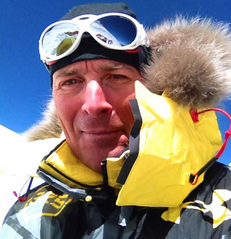
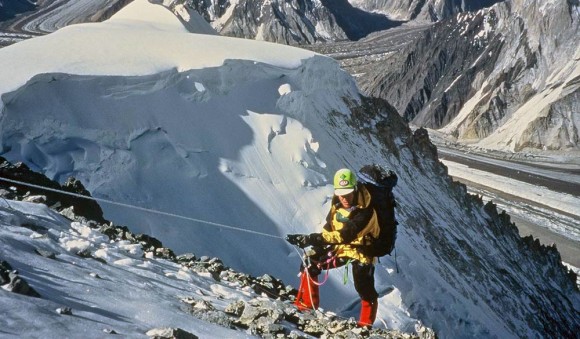
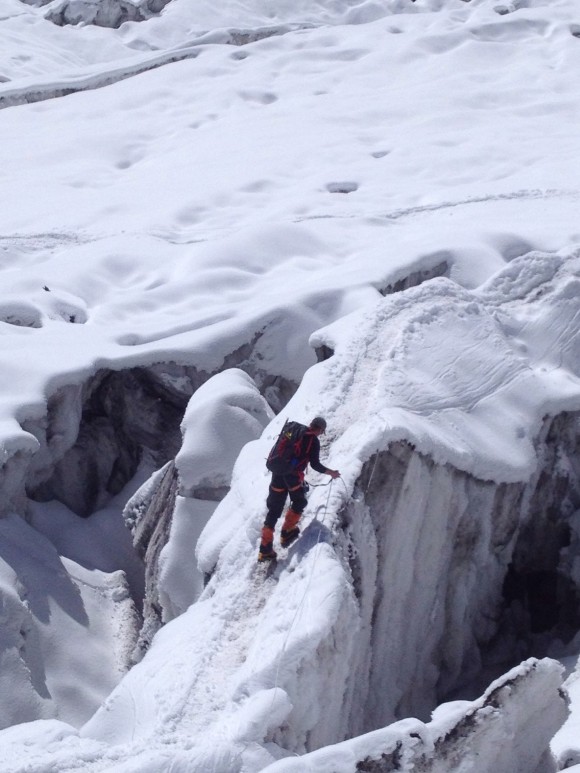
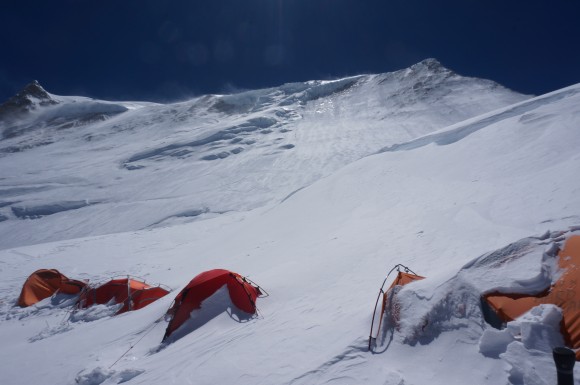
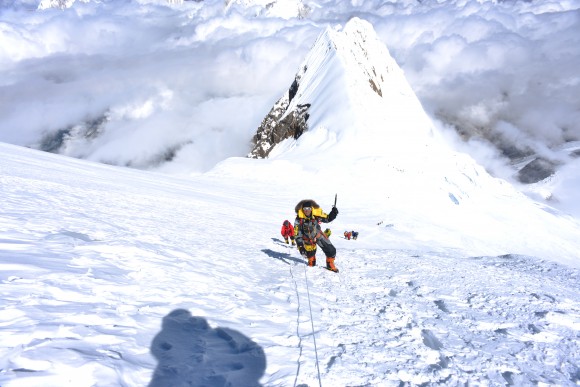
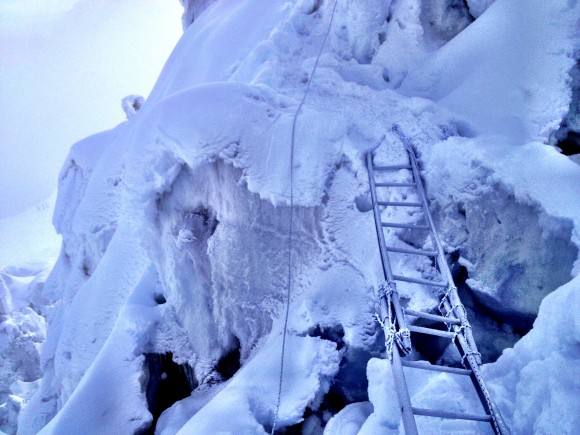
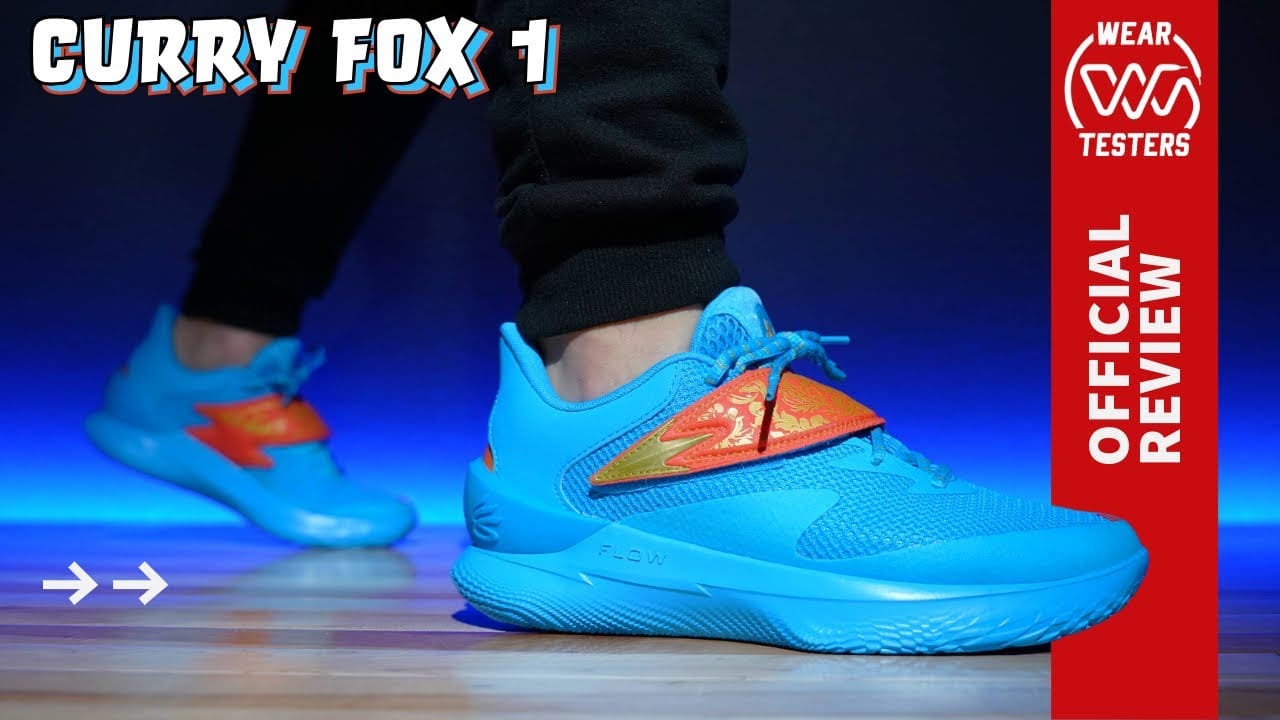
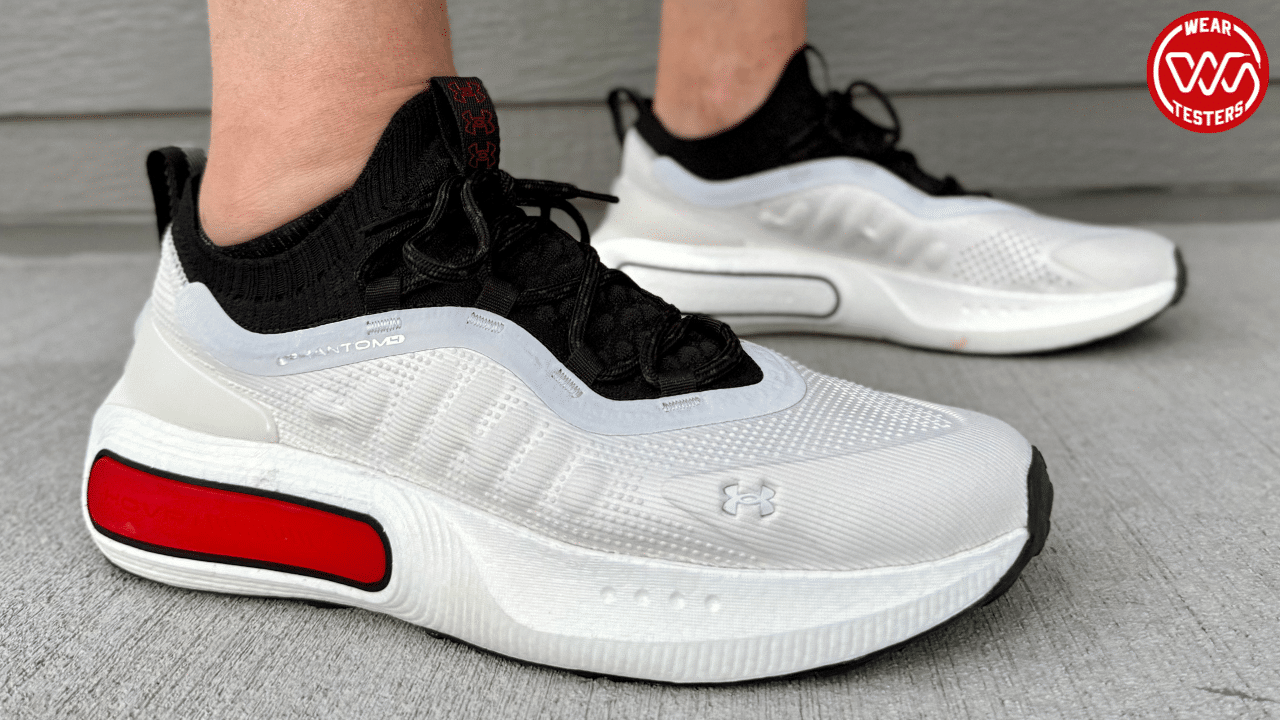

Good read. If you’re going to do something like that, I’d say do it for a good cause. Definitely caught my attention.
I’m glad you enjoyed it! By reading and learning about human trafficking, we can start to make a difference.